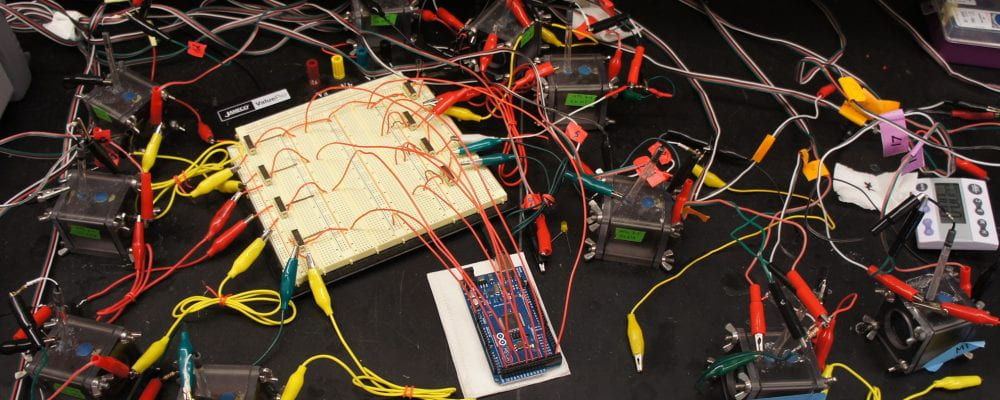The US uses about 3.3 terra watts (TW) of energy, and produces 500 gigawatts (GW) of electricity. New sources of energy are needed. Using other types of fossil fuels is possible, but fossilized sources will continue to increase releases of carbon dioxide into the atmosphere, contributing to global warming. For these reasons, the Logan lab is developing new bioenergy technologies with a focus on systems that can help sustain the global need for potable water and sanitation to protect human health, even as oil and other fossil fuels become less available and more costly.
The Logan lab is working to address both energy and water needs through the development of microbial fuel cells (MFCs) for electricty production, and microbial electrolysis cells (MECs) for biofuel (hydrogen and methane gas) production. The production of electricity or biofuels is important to sustainable wastewater treatment as 5% of electricity produced in the USA is used for the water infrastructure (all aspects, including pumping, treatment, etc.), with 3% used for wastewater treatment alone.
New articles of special interest
- Highest power density using acetate and 50 mM PBS of 8.8 W/m2 recently achieved by our group using a novel AEM configuation and an improved cathode. [read]
- A power density of 5.7 W/m2 set using 50 mM PBS and 7.2 W/m2 using 100 mM PBS. [read]
- A record of 1.34 W/m2 was set using wastewater (synthetic domestic) in a thin catholyte chamber, and showed the critical role of the solution buffer. [read]
Links- MFCs and related topics
- MFCs and MFC Technologies: YouTube Website on MFCs by Logan Lab
- Tweets: www.twitter.com/MFCtechnology
- Make an MFC: See the “Make one” page
- Review paper on MFCs (2012): in Science Logan&Rabaey (2012)
- ISMET: Find out more about the International Society of Microbial Electrochemistry and Technologies
- Interviews: ByteSize Science, on MFCs ; Penn State on MFCs (2011);
Links- Others
- Logan lab link: Logan lab website (updated in 2017)
- Logan lab link: Short video on Logan Lab MxC work. (2013)
- Logan publications: All publications: Citations on Google scholar.
- New website: Energy from water (2016)










